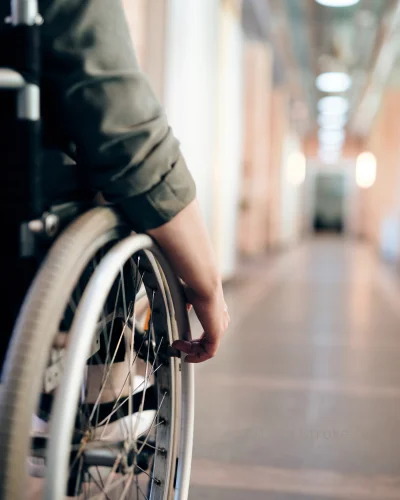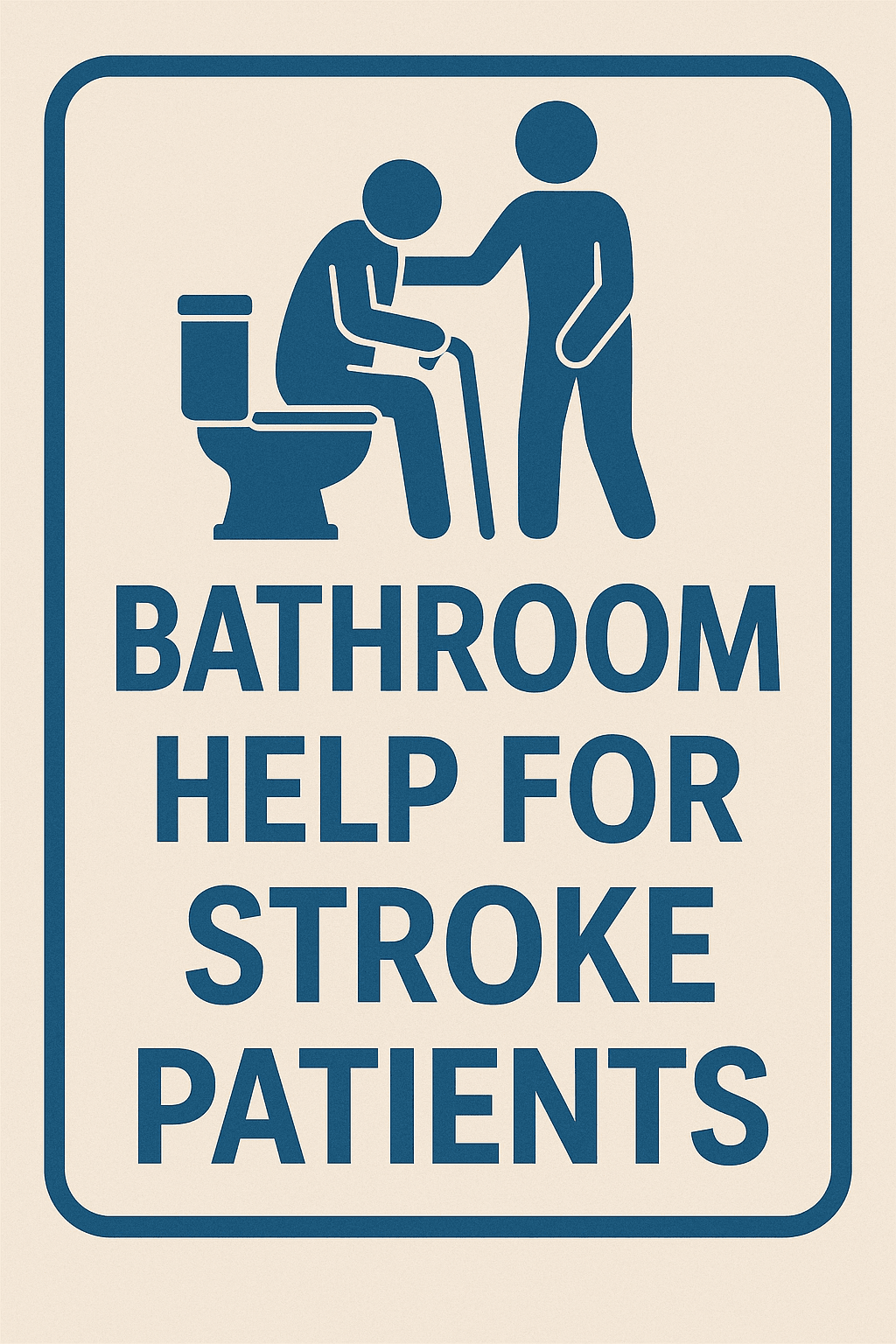Prevent Falls: Bathroom Help for Stroke Patients

Let’s be honest—getting back to normal after a major change in your life is no small task. Even something as simple as getting cleaned up in the morning can feel like climbing a mountain. One of the most challenging spots in the home? That little room with the tub, sink, and toilet.
Slippery surfaces, sudden twists, and narrow corners can quickly transform any space into a stressful environment. Everyday movements may feel risky, and each step can trigger caution or anxiety. By making thoughtful adjustments—like adding non-slip coverings, rearranging furniture for smoother pathways, or improving lighting—this area can regain a sense of safety and ease. Small, practical changes not only reduce risk but also create a more inviting, comfortable atmosphere, whether for personal use or for someone living nearby.
Why This Space Matters So Much
Even a small corner of a home can greatly influence day-to-day comfort and confidence. When moving, standing, or bending becomes challenging, routine tasks can quickly turn frustrating or risky. Individuals who have experienced significant changes often face difficulties with strength, balance, or movement on one side, making certain areas feel unpredictable and uneasy.
What often goes unnoticed is how much calm and independence can arise from thoughtful adjustments. When spaces are easier to navigate, confidence grows naturally. That confidence doesn’t stay confined—it spreads, improving experiences and interactions throughout daily life.
Easy Upgrades That Make a Huge Difference
Let’s go room-by-room and look at simple, practical changes that can help right away.
Entrance and Floor Area
1. Clear the Way:
Ensure pathways leading to this area remain clear of obstacles, loose cords, or rugs that might shift underfoot.
2. Watch Those Floors:
Some materials get slick fast. Rubber-backed mats or grippy flooring can help keep things solid underfoot.
3. Threshold Help:
For doorways with a step or uneven surface, adding a low ramp can create a smooth transition, making movement easier for those using walkers or wheeled devices.

Shower and Tub Area
1. No Step, No Problem:
Stepping over a tall edge is tough when your legs feel off. Look into options where there’s less to step over—or none at all.
2. Handholds:
Install solid grab bars within easy reach. Secure them firmly to walls and position them where stability is most needed—by entrances, seating areas, or sinks.
3. Non-Slip Everything:
Stick-on strips or full mats with textured grip help reduce slipping when water gets involved.
4. Seating Solutions:
There are special stools or chairs designed for this exact purpose. Some come with backs or arms for even more support.
5. Moveable Shower Heads:
A flexible, extended hose with a handheld nozzle allows access to all areas while seated. Choose one with a simple on-off switch to control water flow effortlessly.
Around the Toilet
1. Boost the Height:
Getting down low and back up can be tough. A riser adds a few inches to make things easier.
2. Support Frames:
Frames with handrails give extra help when standing or sitting.
3. Built-in Bars:
Some folks prefer wall-mounted supports nearby instead of a full frame. Both can work—go with what feels most stable.
4. Clean-Up Help:
For anyone dealing with less movement in their hands, attachments with a spray option can make cleanup easier and more dignified.
Sink and Counter Area
1. Clear Underneath:
When using wheeled devices, ensure there’s enough clearance beneath faucet areas for easy access and comfortable positioning.
2. Easier Handles:
Forget twist knobs. Levers or even touch-free options are much easier to manage, especially with just one working hand.
3. Prevent Burns:
Devices that keep the water from getting too hot can prevent painful surprises.
Lights and Alerts
1. Brighten Things Up:
Motion-sensing bulbs prevent fumbling in darkness. Keep all areas well-lit at all times, whether during day or night.
2. Emergency Buttons:
Install a simple alert button or cord that someone can reach from a seated position. That way, if something does go wrong, help is just a push away.
3. Voice Helpers:
Smart devices with voice control can turn on lights, play music, or call for help without needing to touch anything.
Tips for Loved Ones and Care Partners
1. Stay Nearby (When Needed):
At first, stay nearby during visits to this area—ready to step in if anything unexpected happens.
2. Go Slow:
Quick movements can throw things off balance. Encourage taking it step by step.
3. Dress for Success:
Tight clothes or long robes can trip someone up. Choose outfits that are comfy, easy to put on, and don’t drag.
4. Create a Routine:
Keeping a consistent routine minimizes rushing, a common time for accidents or mishaps.
5. Use Visuals:
For those dealing with memory or focus issues, labels and images near switches, buttons, or controls can help guide them through tasks.
Budget-Friendly Solutions
No major renovations are required. Many practical tools are affordable and simple to install:
Grippy mats: ~$15–$30
Seat risers: ~$30–$70
Portable stools: ~$40–$100
Stick-on traction strips: ~$10–$20
Safety frames: ~$60 or less
Pro tip: Talk with an occupational therapist first. Some of these tools may be covered by insurance—or even provided free through local programs.
Consult Experienced Specialists
Want to ensure every adjustment meets individual needs? Partner with experienced specialists. Occupational therapists, mobility experts, or accessibility consultants can assess current setups and offer recommendations tailored to personal routines and abilities.
Final Thoughts
Rebuilding confidence after a major life change happens gradually, beginning with small victories. Transforming a challenging room into a space that makes daily routines easier marks a significant step forward.
With careful adjustments, patience, and practical tools, areas that once felt difficult or risky can become spaces of independence and ease once more.
Frequently Asked Questions: Creating a Comfortable Routine After a Major Life Shift
What can help someone stay warm while getting cleaned up?
After a major change, the body may not regulate temperature as well. A chilly environment can be uncomfortable or even risky. Use space heaters (away from water), warm fluffy towels, and heated pads placed on a chair before use. Also, robes made from fleece or microfiber hold in warmth better than traditional cotton.
Are there ways to help someone manage personal hygiene when they can’t use both hands?
Yes. One-handed grooming aids like suction-based nail clippers, pump-style soap dispensers, and electric toothbrushes with wide handles can make personal care easier. Long-handled sponges or brush tools help reach areas without strain, and adaptive kits are available for folks who prefer privacy but still need support.
How do I support someone who’s embarrassed or frustrated during daily routines?
Emotionally, this is a tough transition. Try to give them choices (like which time of day to clean up or what products to use) so they feel in control. Use humor if it fits, and always protect their privacy with robes, towels, and closed doors. Praise progress, even on hard days. A little empathy goes a long way.
What are some ways to reduce noise and echoes in this space?
People dealing with sensory sensitivity or confusion may struggle in echo-prone areas. Add plush rugs (with non-slip backing), cloth curtains, or wall panels to absorb sound. Soft music or white noise can also create a more calming atmosphere during routines.
How do I manage strong smells from personal care or cleaning products?
Some folks become sensitive to scents after a life event or illness. Choose fragrance-free, hypoallergenic items whenever possible. Keep air circulating with a small fan or cracked window. A few drops of essential oil on a cloth placed nearby (not in a diffuser) can be calming without overwhelming the senses.
What should I keep close by during clean-up time to avoid multiple trips?
Prepare a “grab-and-go” basket filled with essentials such as wipes, grooming items, undergarments, skin cream, a fresh set of clothes, and any medications used during routines. Having everything within reach saves time and effort, making daily tasks smoother for both individuals and those providing assistance.
How can I help someone adjust when their sense of balance varies from day to day?
Having occasional “off” days is normal. Rather than forcing a full routine, make adjustments. Use extra seating, allow more time, and simplify steps whenever possible. Sometimes moving part of a task to a different area—such as brushing hair while seated at a kitchen chair—can ease fatigue and lower risk.
What kind of foot support helps inside and around wet areas?
Footwear makes a difference. Look for shoes or slippers with enclosed heels, slip-resistant soles, and fasteners (like Velcro) instead of laces. Avoid socks alone—they’re too slick. Waterproof foot covers or no-slip sock options with grip bottoms can also be useful on smooth surfaces.
Is it helpful to use mirrors for someone with mobility or perception issues?
This depends. For some, mirrors help them understand their body position better, especially during grooming. But for others—especially those with spatial confusion or visual changes—mirrors may be disorienting. Try covering or repositioning them if they’re causing anxiety or hesitation.
How can I make things easier without permanent changes to the home?
If you’re renting or waiting on renovations, use temporary tools: tension-mounted grab bars, stick-on lighting, portable stools, and rolling caddies for supplies. These can be added and removed without tools or damage. Some mobility stores even offer short-term rentals for adaptive equipment.
Helpful and relevant referral links:
Adaptive Equipment & Daily Living Aids
GoldViolin / Parentgiving – https://www.parentgiving.com
Offers comfort tools, mobility gear, personal care items, and aids for limited movement.The Wright Stuff / Mobility Aids – https://www.mobility-aids.com
Specializes in practical tools for grooming, moving around, and home accessibility.AliMed – https://www.alimed.com
Medical and home-use products designed for improved day-to-day ease.
Support & Information Networks
Family Caregiver Alliance – https://www.caregiver.org
Educational content, local assistance programs, and emotional support for caregivers.Eldercare Locator (U.S. Government) – https://eldercare.acl.gov
Connects families to services, therapy, and home help nationwide.ABLEData Assistive Technology Directory (Archived by NARIC) – https://www.naric.com
A huge database of assistive tech, including tools for grooming, comfort, and mobility.
Online Stores for Comfort Accessories
Carewell – https://www.carewell.com
Family-focused shopping site with discreet delivery of personal care essentials.Amazon Assistive Living Products – https://www.amazon.com
Wide selection of grab tools, personal care items, and space-friendly seating.
Community Support & Learning
Caring.com – https://www.caring.com
Reviews of in-home care providers, helpful articles, and checklists for daily prep.
Related posts:
- Gettin’ Back Yer Voice: Tacklin’ Aphasia After a Stroke
- What Happens in the Final Stages After a Stroke?
- Best Leg Exercises for Stroke Recovery
- Signs & Effects of a Right-Side Stroke Explained
- Stroke Recovery: How to Walk Again with Confidence
- Returning to Work After a Stroke: Know Your Rights
- How Does Smoking Cause a Stroke?
- Stroke Finger Exercises: Regain Hand Strength and Dexterity
- 6 Foods That Prevent Stroke: A Simple Guide to Eating Smart
- Can Eating Eggs Prevent a Stroke? The Surprising Truth